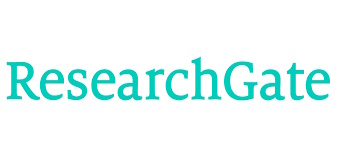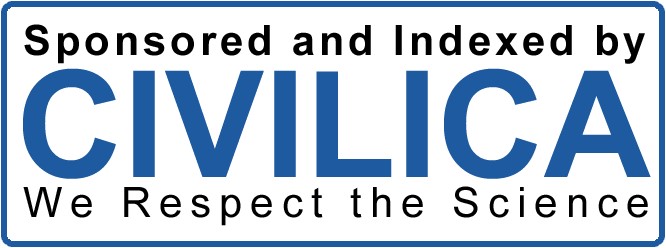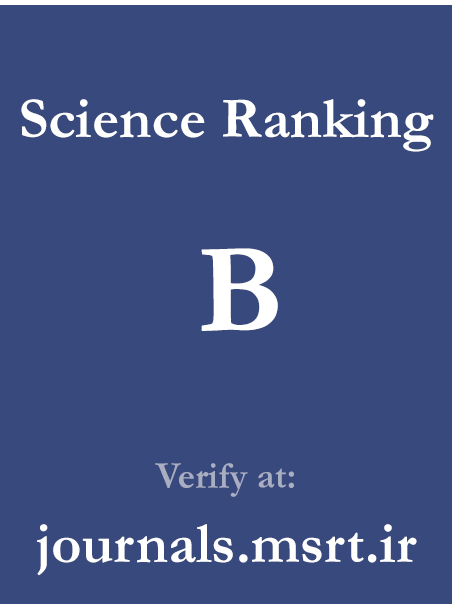Proposing an Information Technology Management Model in the FinTech Sector Using a Mixed-Methods Approach (Case Study: Tehran Stock Exchange Organization)
Keywords:
Information Technology Management, Financial Management, Financial Technology (FinTech).Abstract
The present study aims to propose an Information Technology (IT) management model in the FinTech sector using a mixed-methods (qualitative–quantitative) approach, with a case study of the Tehran Stock Exchange Organization. To achieve this goal, after reviewing the concepts of information technology and financial technology (FinTech), the study first identified the components and indicators and developed a conceptual model through qualitative methods, and then validated the model and examined the relationships among its components through quantitative methods. The statistical population in the qualitative phase consisted of experts in the field of financial technology, while in the quantitative phase it included employees of the Tehran Stock Exchange Organization. The qualitative sample comprised 10 experts selected based on theoretical saturation, and the quantitative sample consisted of 80 individuals determined according to the Krejcie and Morgan table, selected through simple random sampling. For data collection, interviews and questionnaires were used. The validity of the research tools was confirmed through content validity (by experts) and construct validity (via confirmatory factor analysis using SPSS and SmartPLS4 software). The reliability was verified using Cronbach’s alpha coefficient and composite reliability. In data analysis, qualitative data were analyzed through interview coding, while quantitative data were examined using the Kolmogorov–Smirnov test to assess data distribution, and structural equation modeling (SEM) and path analysis were applied to validate the model and explore the relationships among variables. The qualitative findings revealed that in the proposed model, the causal conditions include (1) technology acceptance, (2) education and learning, and (3) infrastructure; the central phenomenon is (4) information technology management; the facilitators include (5) quality of financial services; the intervening conditions consist of (6) FinTech barriers and challenges; the strategy involves (7) financial knowledge management; and the consequences are represented by (8) IT management outcomes. The quantitative results indicated that technology acceptance, education and learning, and infrastructure have a significant positive effect on information technology management, which in turn enhances the level of financial knowledge management. Moreover, the results showed that the quality of financial services, as well as barriers and challenges, both directly and indirectly—through financial knowledge management—contribute to generating outcomes that improve IT management performance in FinTech organizations.
Downloads
References
Anik, S., Santoso, B., & Ayuni, S. (2022). The Importance of Information Technology Adoption and Fintech to Improve SMEs Performance During the Covid-19 Pandemic International Conference on Intelligent Networking and Collaborative Systems, Cham. https://doi.org/10.1007/978-3-031-14627-5_31
Branzoli, N., & Supino, I. (2020). FinTech Credit: A Critical Review of Empirical Research Literature. Bank of Italy Occasional Paper. https://doi.org/10.2139/ssrn.3612726
Cornelli, G., Frost, J., & Gambacorta, L. (2021). Fintech and Big Tech Credit: What Explains the Rise of Digital Lending? https://www.econstor.eu/bitstream/10419/232393/1/CESifo-Forum-2021-02-p30-34.pdf
Ferilli, G. B. (2025). FinTech Challenges and Opportunities in a Global Perspective. In Bank-FinTech M&As and Banking Innovation: A Performance Assessment of the Global Banking System (pp. 37-53). https://doi.org/10.1007/978-3-031-84445-4_3
Feyen, E., Frost, J., Gambacorta, L., Natarajan, H., & Sall, M. (2021). Fintech and the digital transformation of financial services: implications for market structure and public policy. https://www.bis.org/publ/bppdf/bispap117.pdf
Guo, J., Fang, H., Liu, X., Wang, C., & Wang, Y. (2023). FinTech and financing constraints of enterprises: Evidence from China. Journal of International Financial Markets, Institutions and Money, 82, 101713. https://doi.org/10.1016/j.intfin.2022.101713
Hosseinzadeh, E., & Moini, A. H. (2021). An Investigation of the Impact of Information and Communication Technology Expansion on the Energy Expenditure of Iranian Households (Provincial Approach). 13(49-50), 1-12. https://www.magiran.com/paper/2375104/effect-of-information-and-communication-technology-deployment-on-health-expenditures-of-iranian-households-a-provincial-approach?lang=en
Khazaei, H., Faezi Razi, F., & Valiq al-Ruaya, Y. (2022). Proposed Model for the Adoption of Fintech Products and Services by Customers of Banks in Iran. Quarterly Journal of Islamic Banking and Economy, 38, 249-280. https://sid.ir/paper/1040246/en
Kliber, A., Bedowska-Sojka, B., Rutkowska, A., & Swierczynska, K. (2021). Triggers and obstacles to the development of the Fintech sector in Poland. Risks, 9(2), 30-41. https://doi.org/10.3390/risks9020030
Komendani, S., & Jowhari Pour, H. (2020). Strategic Objectives of Information Technology in Developing Human Resources Initiatives. Journal of Elite Science and Engineering, 5(5), 1-18. https://www.sid.ir/paper/525325/fa
Kou, G., & Lu, Y. (2025). FinTech: a literature review of emerging financial technologies and applications. Financial Innovation, 11(1), 1. https://doi.org/10.1186/s40854-024-00668-6
Laidroo, L., Koroleva, E., Kliber, A., Rupeika-Apoga, R., & Grigaliuniene, Z. (2021). Business models of FinTechs-Difference in similarity? Electronic Commerce Research and Applications, 46, 101034. https://doi.org/10.1016/j.elerap.2021.101034
Mamonov, S. (2020). The role of information technology in FinTech innovation: insights from the New York City ecosystem Responsible Design, Implementation and Use of Information and Communication Technology: 19th IFIP WG 6.11 Conference on e-Business, e-Services, and e-Society, I3E 2020, Skukuza, South Africa, April 6-8, 2020, Proceedings, Part I 19, Cham. https://doi.org/10.1007/978-3-030-44999-5_26
Molleti, R., & Khanna, A. (2025). End to End Well Architected Zero Trust Architecture in Fintech Cloud Environments. International Scientific Journal of Engineering and Management, 04(01), 1-7. https://doi.org/10.55041/isjem00106
Moradi, S., Naderi, N., & Del Angizan, S. (2021). Foresight of Iran's Banking Industry with Emphasis on the Role of Fintech Startups by 2025. Studies in Intelligent Business Management, 10(38), 37-67. https://ims.atu.ac.ir/article_13165.html?lang=en
Nguyen, A. H., Ha, H. H., & Nguyen, S. L. (2020). Determinants of Information Technology Audit Quality. Journal of Asian Finance, Economics and Business, 7(4), 41-50. https://doi.org/10.13106/jafeb.2020.vol7.no4.41
Priyadarshi, A., Singh, P., Dawadi, P., Dixit, A. K., & Prasad, D. (2024). Role of FinTech Apps in Increasing Investment Decisions: A Study on the Capital Market. Financial Markets, Institutions and Risks, 8(2), 186-197. https://doi.org/10.61093/fmir.8(2).186-197.2024
Rahmani, A., Mollanazari, M., Faal Qayumi, A., Mahmoudkhani, M., Behbahani Nia, P. S., Parsayi, M., Qadirian Arani, M. H., & Khadivar, A. (2022). Designing a Financial Management and Accounting Maturity Model for Public Sector Reporting Units. Accounting and Auditing Reviews, 29(2), 278-310. https://acctgrev.ut.ac.ir/article_88665.html?lang=en
Rastgar, A. A., & Farakhi Zadeh, F. (2021). Examining and Explaining Key Factors Affecting the Effectiveness of Information Technology in Organizations from a Combined Approximation-Entropy Approach. Quarterly Journal of Technology Growth, 18(69), 55-63. https://doi.org/10.52547/jstpi.20972.18.69.55
Safdari, M., Raeisi, A., & FiroozjahanTighi, M. (2021). Identification and Prioritization of Factors Influencing the Development of WealthTechs in Iran (Social-Cultural and Political-Economic Factors). https://en.civilica.com/doc/1463887/
Salimian, F. (2021). The Impact of Financial Management on Increasing Productivity and Profitability in Organizations. 1-4. https://en.civilica.com/doc/1463792/
Sampat, B., Mogaji, E., & Nguyen, N. P. (2024). The dark side of fintech in financial services: A qualitative enquiry into fintech developers' perspective. International Journal of Bank Marketing. https://doi.org/10.1108/IJBM-07-2022-0328
Seyedalaian, S. M., & Salehi, K. (2021). The Impact of Using Educational Aids and Information Technology on Improving Mathematics Learning in Secondary School Students. Scientific Journal of Educational Technology, 15(4), 684-694. https://www.sid.ir/paper/1036582/en
Shoetan, P. O. (2024). Transforming Fintech Fraud Detection With Advanced Artificial Intelligence Algorithms. Finance & Accounting Research Journal, 6(4), 602-625. https://doi.org/10.51594/farj.v6i4.1036
Shuhaiber, A., Al-Omoush, K. S., & Alsmadi, A. A. (2025). Investigating trust and perceived value in cryptocurrencies: do optimism, FinTech literacy and perceived financial and security risks matter? Kybernetes, 54(1), 330-357. https://doi.org/10.1108/K-03-2023-0435
Slazus, B. J., & Bick, G. (2022). Factors that Influence Fintech Adoption in South Africa: A Study of Consumer Behaviour towards Branchless Mobile Banking. Athens Journal of Business & Economics, 8(1), 43-64. https://doi.org/10.30958/ajbe.8-1-3
Usman, N., Griffiths, M., & Alam, A. (2025). FinTech and money laundering: moderating effect of financial regulations and financial literacy. Digital Policy, Regulation and Governance, 27(3), 301-326. https://doi.org/10.1108/DPRG-04-2024-0068
Vaghfi, S. H., Zargar, K., & Shah, S. (2021). The Role of Financial Knowledge Management in Risk Reduction with Emphasis on the Role of Intellectual Capital of the Company (Case Study: Companies Listed on the Tehran Stock Exchange). https://en.civilica.com/doc/1463855/
Vintilă, G., Gherghina, Ş. C., & Toader, D. A. (2019). Exploring the Determinants of Financial Structure in the Technology Industry: Panel Data Evidence from the New York Stock Exchange Listed Companies. Journal of Risk and Financial Management, 12(4), 163. https://doi.org/10.3390/jrfm12040163
Downloads
Published
Submitted
Revised
Accepted
Issue
Section
License
Copyright (c) 2025 Behzad Ebrahimi (Author); Nasser Fegh-hi Farahmand (Corresponding author); Mohammad Nasiri (Author)

This work is licensed under a Creative Commons Attribution-NonCommercial 4.0 International License.






